Pinning and welding a muzzle device to a rifle is often done to comply with legal barrel length requirements. In the United States, rifles must have a minimum barrel length of 16 inches. If a barrel is shorter than this, permanently attaching (via pinning and welding) a muzzle device like a flash hider or muzzle brake can extend the overall length to meet legal standards. This method ensures the device cannot be easily removed, which is critical for legal classification. However, there are some benefits beyond legal compliance. Pinning and welding can also enhance durability, by preventing the device from loosening over time. Under heavy use or sustained fire, this is especially helpful.
Finding the right gunsmith for a pin and weld job is essential. It’s not just for ensuring the work is done legally and cleanly, but also for preserving the integrity and aesthetics of your rifle.
Start by asking around in local shooting communities, forums, or competition circles for trusted recommendations. Personal referrals like these often lead to the most skilled and detail-oriented professionals. When choosing a gunsmith, look for someone experienced in pin and welds specifically. This is especially important if you’re using a QD suppressor mount that requires precise timing and alignment. As for pricing, most reputable shops will charge between $50 and $150, depending on the complexity of the job. If the device needs to be timed, or if any additional machining or refinishing is required, the price will generally be higher. Some shops may bundle this with thread work or include minor corrections if something doesn’t quite line up. As always, it’s worth discussing expectations and measurements with your gunsmith ahead of time.
When selecting a muzzle device for a pin and weld job, there are important elements to consider. The long-term performance, durability, and the added functionality the device may offer should come into account. Different types of muzzle devices serve specific roles, and each comes with trade-offs. For a permanent installation like a pin and weld, the chosen device should match the intended use of the rifle, and be robust enough to remain effective and relevant over time.
Here’s a breakdown of the most common categories, and why each might be preferred for a long-term, permanent installation:
Flash hiders, like the classic A2 birdcage or more the advanced SureFire 3-Prong or Dead Air Flash Hiders, are designed to reduce muzzle flash. These help to preserve the shooter’s night vision, and minimize visible signature in low-light conditions. These are especially beneficial for duty rifles, home defense, or rifles likely to be used in low-light environments. A high-quality flash hider is a solid pin and weld option, as they are generally lightweight, reliable, and simple. Flash hiders tend to be worse for suppressor hosts, so do keep that in mind.
Muzzle brakes, such as the Precision Armament M4-72 or VG6 Gamma, are built to reduce felt recoil and muzzle rise. These aid in faster follow-up shots and greater recoil control during rapid fire. These are especially useful for competition shooters, or anyone running a lightweight rifle with significant recoil. However, brakes tend to increase noise and concussion significantly, making them less ideal for close-quarters or team environments. Pinning and welding a muzzle brake is often done for competition builds or high-performance rifles where control is paramount.
Hybrid muzzle devices attempt to blend the benefits of both brakes and flash hiders. Examples include the BCM MOD 1 Comp, the SureFire WarComp, and the Griffin Armament FlashComp. These devices offer a balanced performance profile, reducing flash and managing recoil decently, making them ideal for general-purpose rifles. Their versatility makes them an excellent long-term choice for pin and weld, especially if you’re unsure about specializing the rifle for a single role.
For shooters planning to run a suppressor, selecting a compatible muzzle device is crucial. It should allow for Quick Detach (QD) for your specific suppressor.
Brands like SureFire (SOCOM mount), Dead Air (KeyMo), SilencerCo (ASR), HUX, and Rugged Suppressors offer muzzle devices that double as QD suppressor mounts. These devices, (flash hiders, brakes, or hybrids), allow the user to quickly attach or remove a suppressor while maintaining a secure and precise mount. When pinning and welding a QD suppressor mount, it’s essential to choose one that matches your suppressor model. It should be rated for durability under hard use, as the suppressor will be harder on the gun than on an unsuppressed gun. This setup is ideal for users who want to maintain NFA compliance on a shorter barrel while still being able to mount a suppressor.
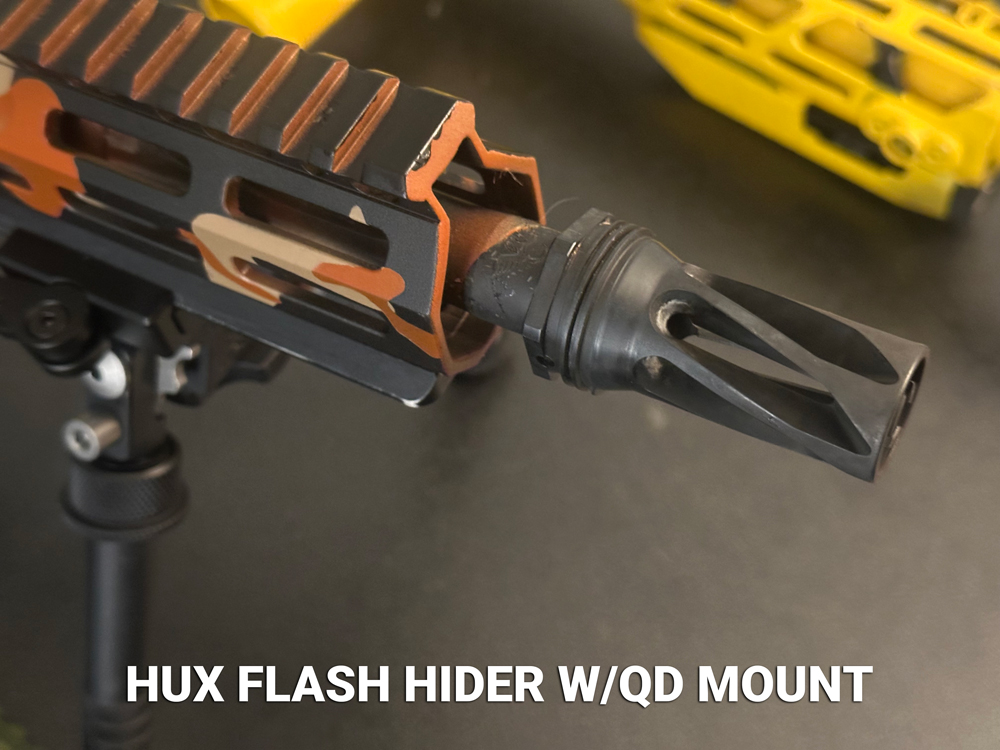
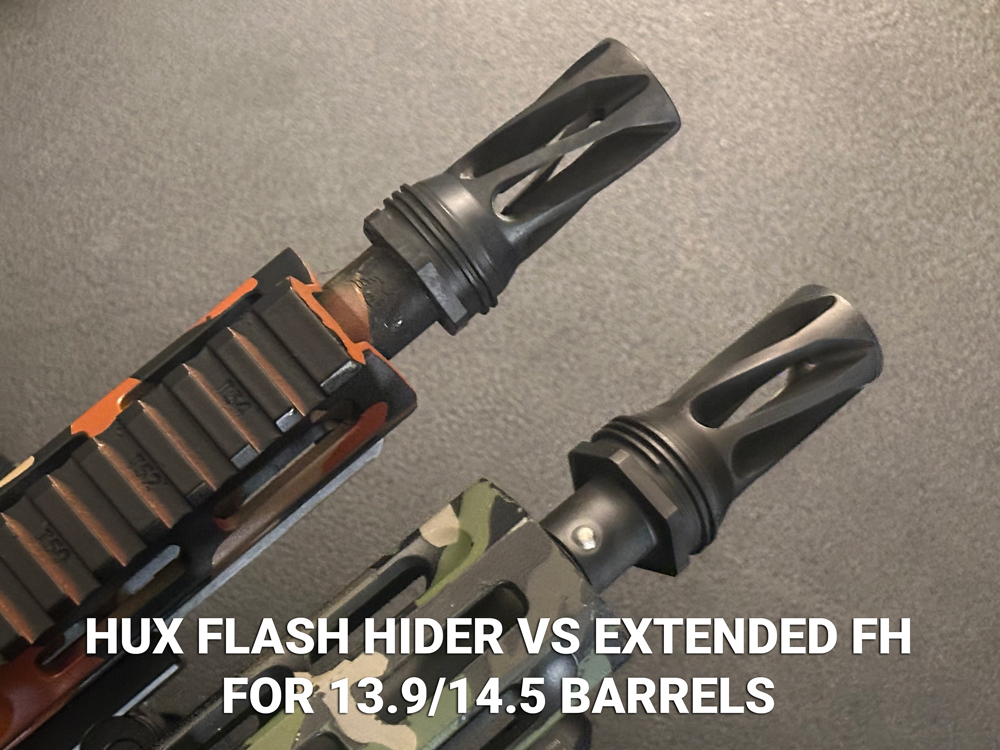
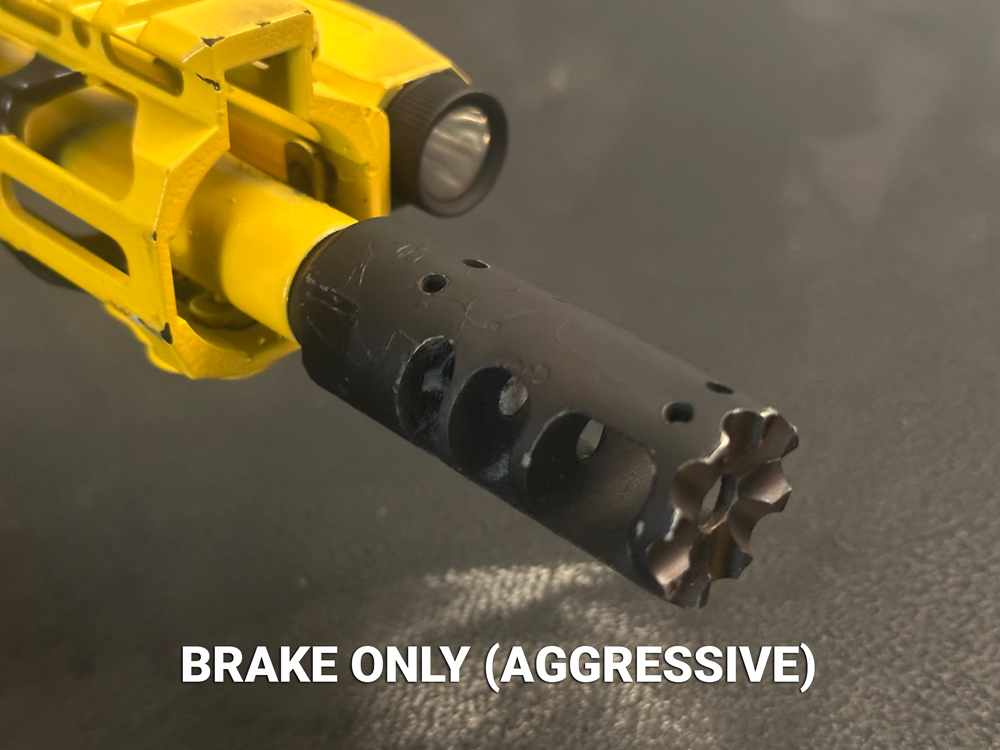
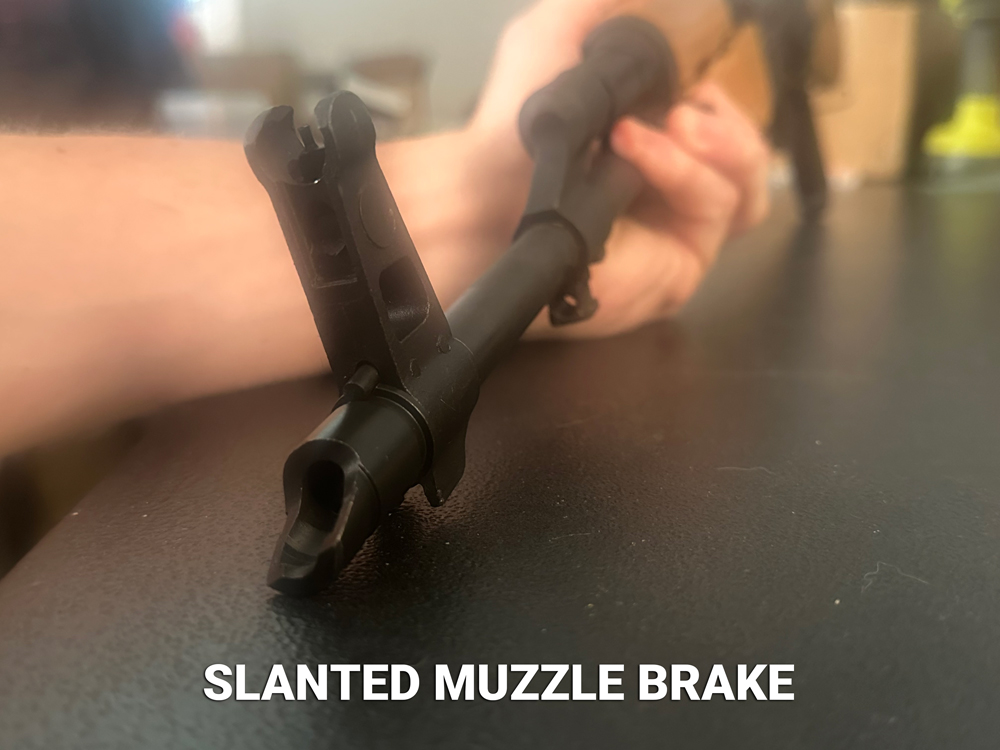
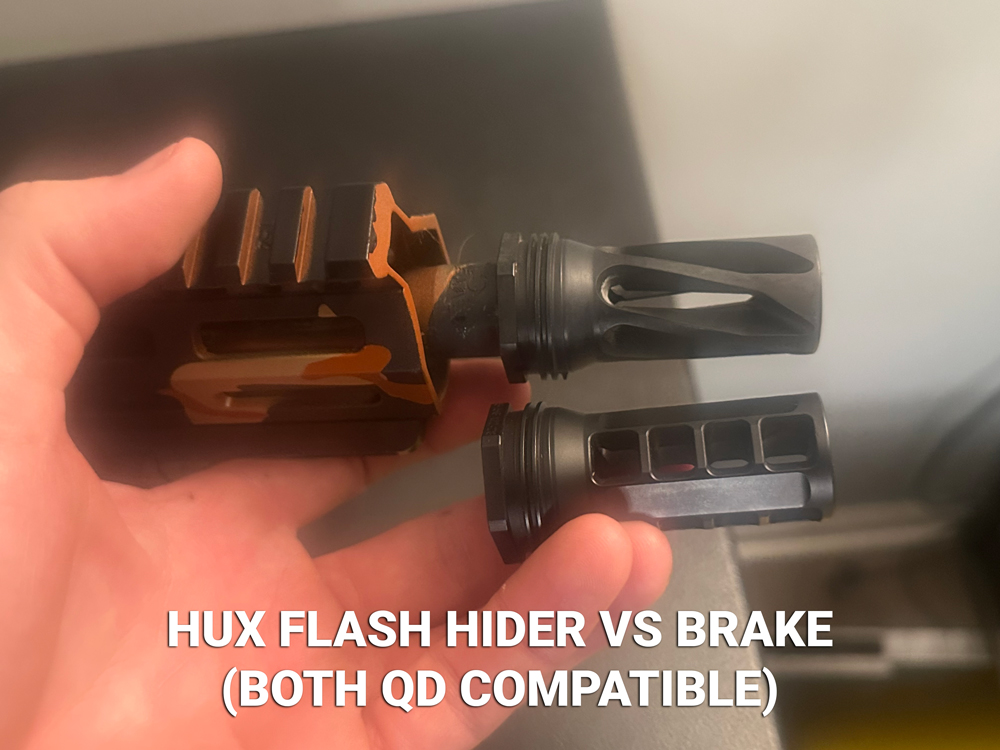
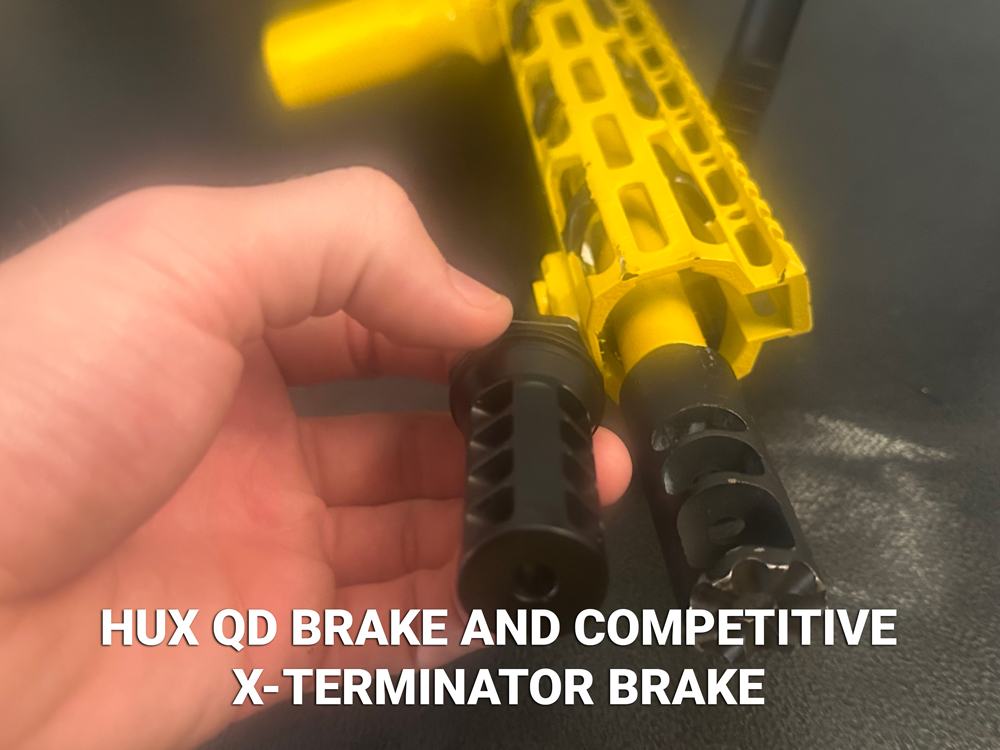
Pinning and welding a muzzle device has some clear pros and cons to consider.
On the plus side, it allows you to run a shorter barrel legally without going through the NFA process. This process of registering a Short-Barreled Rifle (SBR) is often lengthy and frustrating. On a pin and weld job, there’s no $200 tax stamp, no wait time, no fingerprints, and no need to notify the ATF for interstate travel. It’s also a simple, one-and-done solution. Once the job is done properly, you’re fully compliant and the rifle is ready to use. That makes it ideal for states with strict SBR laws or for anyone who wants to avoid NFA involvement altogether.
However, the biggest downside is the loss of modularity. Once a muzzle device is pinned and welded, it’s considered a permanent modification. Changing it later requires drilling out the pin and potentially damaging the threads or finish. This limits your ability to switch to different suppressor mounts or try new muzzle devices down the line. It also means you have to be absolutely sure about your barrel length and muzzle device choice before committing, or you could end up paying for the job twice.
| Feature | Pin & Weld | SBR Registration |
|---|---|---|
| Cost | ~$50-150 (Gunsmith) | $200 tax stamp + potential legal or engraving costs |
| Timeline | 1-2 Weeks | 8-12 Days (eForm) |
| Legal Simplicity | No NFA Process Required | Must comply with NFA regulations |
| Customizability | Low (Permanent Device) | High—freely swap parts |
| Suppressor Friendly | Only if pinned QD Device is used | Fully suppressor-ready and modular |
| Travel | No Restrictions | ATF permission needed for interstate transport |
In the end, deciding between pinning and welding or registering an SBR comes down to your priorities. Legal simplicity, cost savings, or long-term flexibility certainly come into play.
Pinning and welding offers a streamlined, no-hassle path to compliance for shorter barrels. It is perfect for those who want a reliable, permanent solution without diving into the complexities of NFA regulations. On the other hand, going the SBR route has lots of benefits. It opens the door to full modularity, compact builds, and easier suppressor integration. However, that comes at the cost of money and added restrictions.
Whichever path you choose, understanding the trade-offs is important. I’d also recommend working with a skilled and trustworthy gunsmith. This will ensure that your rifle build meets both your practical needs and personal goals.
As someone new to working with local gunsmiths, I wasn’t sure what to expect when I set out to get my first pin and weld job done. A fellow competition shooter recommended Legacy Gunsmithing after having some solid work done there, so I reached out via text. The response was quick and professional, and within a week of dropping off my rifle, the work was already completed.
That’s when we hit a snag. I had mismeasured the setup, and ended up just under of the legal barrel length. While the oversight was technically on my end, the gunsmith took partial responsibility for not double-checking the length before welding, and generously offered to redo the job free of charge. At the end of the day I was only out $60 for the weld and $20 for a drop fee away from his shop for the first visit (he works with several local shops & ranges to route his services).
Originally, I was aiming to use a compensator with a HUX QD mount. However, due to the length issue, we ended up going with an extended flash hider that included a QD attachment. It wasn’t exactly what I envisioned, but it still gave me the functionality I wanted. I got some recoil control, suppressor compatibility, and full legal compliance. Plus, once I pick up my HUX 5.56 can, it’ll really shine.
What stood out most wasn’t just the professionalism, but the passion and craftsmanship on display. While I was at the shop, he showed me other in-progress custom projects. From beautifully executed pin & welds, to conversions of non-threaded barrels into suppressor-ready platforms. The most impressive project? A modified .22lr barrel for a pocket pistol, designed to take a suppressor. Sleek, small, and totally unique.
Legacy Gunsmithing definitely earned my trust, and I wouldn’t hesitate to go back for future builds.
Building your own rifle can be one of the most rewarding parts of firearm ownership. That said, it’s important to stay informed about the legal requirements and restrictions that come with different configurations. Personally, I’ve found that a pin-welded setup on a 13.9″ or 14.5″ barrel strikes a great balance. It offers the compact feel and handling of a shorter rifle, while still giving you enough room to tailor the build for specific roles beyond just competition use. It’s a practical, compliant option that still leaves plenty of room for creativity.
I super appreciate Jade for his attention to detail and customer service. I can’t wait to share this year’s competition footage, now that I can finally move from a brace to a stock and vertical grip.